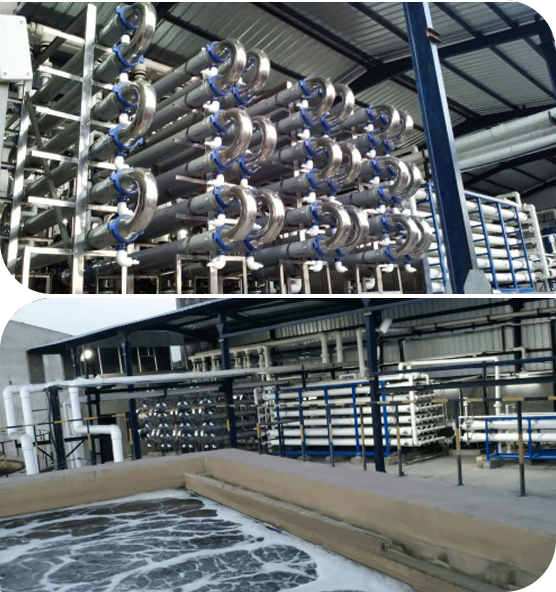
Waterman Engineers Australia is among the primary suppliers of Zero Liquid Discharge procedure. A ZLD technique is often a therapy procedure which can be utilised to get rid of all the liquid waste from a procedure. The objective of ZLD water therapy is to cut back wastewater economically and create potable water that may be match for usual use. Zero discharge procedure is a complicated cure approach that comprises ultrafiltration, reverse osmosis, evaporation and fractional electro deionization. And we've been a perfectly-known supplier of ZLD programs.
In many Industries, such as electric power, oil & fuel, chemical substances, mining and Other individuals, a large amount of wastewater is generated that must be managed. Conventionally, this discharge of wastewater is done by means of a plant outfall to the surface area water human body like an evaporation pond, or sometimes deep very well injected. These practices lead to many environmental worries by the public in lots of areas of the entire world, as drinking water is really a scarce supply and its management really should be monitored. These considerations have resulted within the institution of ZLD processes by quite a few industries to lessen their environmental footprint and improve sustainability. And, Waterman Engineers Australia are best ZLD suppliers you can find for This technique.
Attributes OF ZERO LIQUID DISCHARGE Process
The Houses of the Zero Liquid Discharge procedure can vary depending upon the precise style and design and technology used. Having said that, some common Qualities of ZLD programs consist of:
H2o Conservation: Amongst the principal aims of ZLD techniques would be to conserve h2o by reducing the discharge of liquid waste to the environment.
Higher H2o Purity: ZLD devices are built to generate superior-high quality h2o that may be absolutely free from impurities and contaminants, which makes them suited to use in lots of industrial processes.
Flexibility: ZLD devices are frequently built to accommodate a broad range of enter liquid streams, which makes them flexible and appropriate for use in numerous industries.
Superior Wastewater Procedure: Zero liquid discharge methods use Innovative wastewater treatment ways to remove impurities and contaminants in the effluent, making substantial-high quality water.
Squander Reduction: ZLD systems aid lower squander by lessening the amount of liquid waste that needs to be disposed of and by manufacturing a concentrated, stable waste product that could be securely disposed of.
Electrical power Effectiveness: ZLD devices might be Electricity-intense as a result of large Electricity prerequisites of evaporation and various wastewater procedure processes. Having said that, advances in technological innovation are creating Zero liquid discharge units much more Strength-productive and value-successful.
Waterman Engineers Australia manufactures Zero Liquid Discharge (ZLD) units intended to get rid of all liquid squander, aiming to generate potable h2o and lessen environmental affect. Their ZLD units normally include things like ultrafiltration, reverse osmosis, evaporation, and fractional electro deionization. Important systems utilized are Slipping Movie Brine Concentrators, Pressured Circulation Crystallizer, and Other people, having a two-action process of pre-focus and evaporation/crystallization to Recuperate and reuse h2o. These methods are adaptable to various industries, emphasizing drinking water conservation, significant h2o purity, squander reduction, and energy effectiveness. Complex specifications are diversified and customizable, thinking about elements like water supply, stream fee, and feed water high quality.
The necessity for Zero Liquid Discharge (ZLD) devices arises from your requirement to deal with environmental issues connected with drinking water scarcity and pollution. In industries like power, oil & gasoline, and mining, large quantities of wastewater are produced. Typically, this wastewater is discharged into bodies of h2o, creating air pollution and depleting cleanse water means. ZLD devices purpose to minimize these impacts by treating and recycling wastewater in the industrial system, thus conserving h2o, reducing waste, and selling sustainability.
When thinking about the complex requirements of a Zero Liquid Discharge (ZLD) process, crucial aspects to center on incorporate the drinking water supply it will eventually handle, the process's circulation rate, the caliber of feed h2o, the levels of treatment method involved, the Restoration price of water, techniques for focus disposal, elements of development, operating disorders, and program automation and Manage. These factors make sure the technique's efficiency, sturdiness, and efficiency in managing and recycling industrial wastewater.
Zero Liquid Discharge (ZLD) vegetation provide Advantages like h2o conservation, waste reduction, and air pollution prevention, contributing to environmental sustainability. They are applicable in industries like electric power generation, oil and gasoline, substances, and mining, the place they help in handling industrial wastewater successfully, decreasing the ecological footprint, and complying with demanding environmental rules. These methods are crucial in parts dealing with water scarcity and for industries aiming to boost their sustainability and operational performance.
FAQs to get a Zero Liquid Discharge (ZLD) program normally deal with its operational rules, Price-performance, routine maintenance needs, environmental effects, Zld System Manufacturer Zero Liquid Discharge System applicability across various industries, and regulatory compliance. These queries aid users have an understanding of the system's Rewards, complex needs, and suitability for their certain wastewater management requirements.
1. Zero Liquid Discharge (ZLD) is a wastewater procedure process made to reduce all liquid squander.
two. The system's factors are motivated by the specific industrial system, wastewater composition, and regulatory prerequisites.
3. Effluent treatment vegetation eliminate pollutants from textile effluents to circumvent environmental contamination.
4. Positive aspects include h2o conservation, air pollution reduction, and regulatory compliance.
five. The aim is to attenuate environmental effect by recycling h2o and decreasing waste.
six-nine. Effluent treatment plants are phases in wastewater treatment method: Most important (physical separation), secondary (biological treatment method), and tertiary (Sophisticated treatment method).
ten. Unit operations include things like filtration, sedimentation, Organic procedure, and disinfection.
eleven. Restricting parameters are components that affect the remedy's performance, like pH and contaminant focus.
12. Design factors contain movement amount, effluent composition, and ideal excellent of dealt with drinking water.